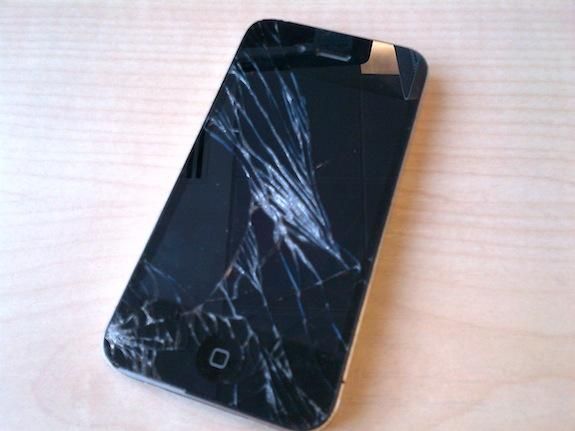We've come a long way since the plastic touch screen of yesteryear. They were soft, resistive, scratched easily, and all but gave rise to the screen-protector industry. Today we've pretty much given up plastic screens for glass, and not just any glass: Corning Gorilla Glass!
Gorilla Glass is super hard, super scratch resistant, and doesn't easily break (but when it does break it's quite impressive). How do they do that? The process itself is a tightly guarded secret (you can't have everyone making super-glass, right?), but it all comes down to "tempering".
What is Tempering?
Tempering is a process of treating a substance, usually iron-based alloys, but in this case glass. Although the end result is similar, it's easy to get confused since the tempering of metals and of glass work somewhat differently.
Hard materials are usually brittle (they break easily). Don't believe me? Take a ceramic knife and a standard knife, and drop them both (don't cut off any toes in the process!). The ceramic blade may be sharper, but it breaks a lot easier!
In metals, tempering follows a "hardening" process to decrease the "hardness" of the material. Doing so increases the metal's "toughness".
In glass, tempering is done to make the material harder , but, depending on the process, some "toughness" may be added as well.
Tempering glass is achieved a little differently than tempering metal. With metal you heat it, then quickly cool the surface. Glass is usually tempered through a chemical process. In the case of Corning's product, tempering is done by sending a sheet of molten glass through a bath of potassium salts. In the bath, the sodium ions in the glass are exchanged for potassium ions. This results in a layer of compressive stress that makes the glass very hard and fairly tough.
Corning also picks their kind of glass carefully. They use an aluminosilicate rather than a more traditional "soda glass" in their products. Doing so lets the potassium ions penetrate deeper into the glass, resulting in a better overall product.
Is that what makes it scratch resistant?
While it's true that a harder surface doesn't scratch as easily as a soft one, the real component at work in a smartphone or tablet screen to reduce scratching is the oleophobic layer, the coating that resists oil from your fingers and your face.
Some people have used chemicals to clean their screens which has resulted in the removal of their oleophobic layer. Unfortunately this means their screens are much more prone to scratching than they were when the layer was intact. Corning uses something called "fluorosilane" to add the oleophobic properties to their product.
Speaking of scratching, one of the best ways to scratch your Gorilla Glass is by rubbing quartz crystals across it. I know, I know, who would do such a thing? Unfortunately, the most common way you'll come into contact with quartz crystals is called "sand". Yes, folks, ordinary sand — and dust!
Shattering!
Remember back in the Pocket PC and Palm Pilot days? Which did you see more, a scratched screen or a cracked screen? By my recollection it was scratches. Occasionally I'd see a broken LCD, but it was rare. Perhaps that's because there weren't as many people using PDAs back then as there are using smartphones and tablets today, but I think it had to do more with the screen.
Today's tempering process compresses the internal structure of the glass, putting it under a good deal of stress. While this makes the screen relatively hard it also means it's just looking for an excuse to release all that pent-up stress! When you drop your device on its face there is a good chance that the internal compression may be released all at once, resulting in a very shattered screen. Scratched screens are more prone to shattering because their surface has already been weakened.
Which do you prefer?
Now that you know a little more about the process, and the side-effects of tempered glass, do you long for the days of yesteryear with plastic screens and obligatory screen protectors, or do you like your tempered glass, even though it may shatter more easily then your old PDA? Let us know in the comments!

